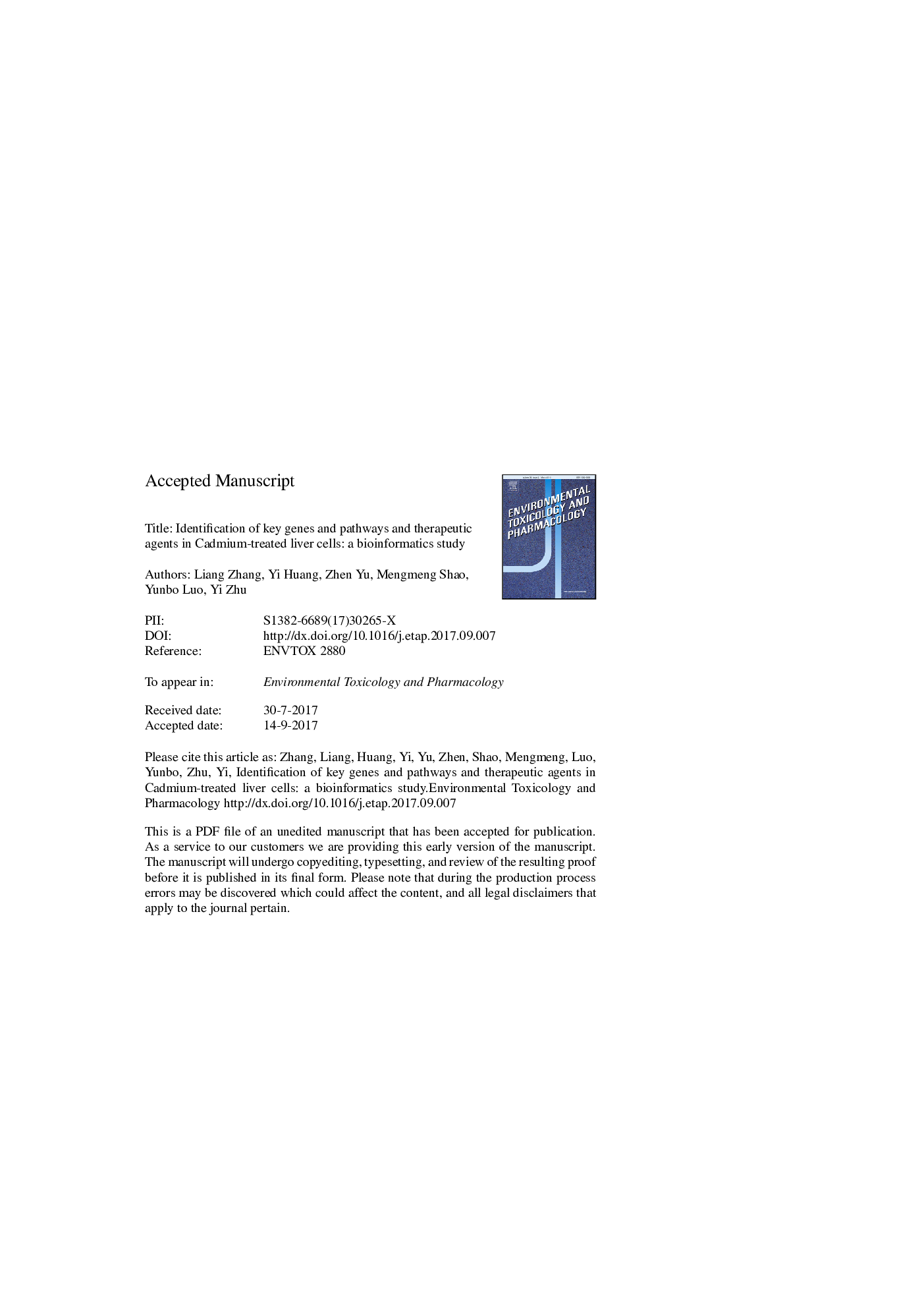| Article ID | Journal | Published Year | Pages | File Type |
|---|---|---|---|---|
| 8546097 | Environmental Toxicology and Pharmacology | 2017 | 17 Pages |
Abstract
Evidence indicates that Cadmium (Cd) can accumulate in liver, which results in acute or chronic cell damage with unclear complex mechanisms. Thus, we aimed to explore the possible molecules and pathways by using bioinformatics methods Consequently, two datasets (GSE8865 and GSE31286) were retrieved and the differentially expressed genes (DEGs) were screened out. The intersection of the DEGs included seven up-regulated and forty-three down-regulated genes, which were mainly enriched in biological cell proliferation items, and were enriched in several metabolism-related pathways. Among the DEGs, several hub genes such as EGR1, FOSL1, ITGA2, EDN1, and IER3 were screened out through protein-protein interaction analysis. Interestingly, BW-B70C was predicted to be a potential agent for attenuating Cd-induced liver cell damage. The present study gave a novel insight into the mechanisms of Cd-induced liver cell damage or malignant transformation and identified several small agents that might be critical for Cd toxicity prevention and treatment.
Keywords
Related Topics
Life Sciences
Environmental Science
Health, Toxicology and Mutagenesis
Authors
Liang Zhang, Yi Huang, Zhen Yu, Mengmeng Shao, Yunbo Luo, Yi Zhu,
